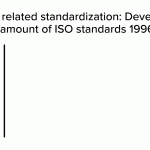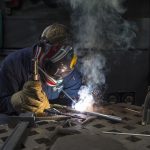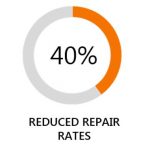Robotics and welding automation has actually been on the program of making business for a long time. Welding robotics are stated to eliminate human mistakes and even forecasted to discover with high endurance, speed, and accuracy. However is it that easy after all?
According to Progressive Markets, an international market, and service consulting company, the international commercial robotics market is anticipated to increase to $88,606 million in 2025, from $37,910 million in 2016. By 2020 more than 1.7 million brand-new commercial robotics will be set up in factories worldwide, approximates the International Federation of Robotics. As we can see, robotics will play a main function in business reasoning of future production and welding, however, how should we, in fact, assess their ROI?
Typically, the financial investment repayment time is computed merely by comparing the expense of the produced items prior to and after financial investment. When choosing, for instance, welding wire for production, this is method easy enough. However, with automation, a broader point of view is needed.
As a system thinker, I like to propose gathering all the pieces on the table prior to delving into conclusions. Welding is the art of procedures, products, and handmade. Together with brand-new production devices, likewise, production preparation and scheduling in addition to welding abilities should be customized to serve a picked production idea. Which production idea is going to be altered when automation is presented to the store flooring.
There are at least 3 expense classifications associated with the production principles, which must be talked about when financial investments on automation remain in concern:
- Direct expenses associated with utilized resources per production phase (these are the primary on everyone’s mind when talking about welding expenses)
- Costs emerging from the existing method of operating, which, nevertheless, relate to the welding work, and likewise
- Expenses connected to the schedule of required resources over the duration of financial investment lifetime, consisting of the result of the ever-repeating knowing curve.In short,
automation impacts the entire production principle, and therefore likewise existing and coming expense structures ought to be studied appropriately.
Reducing the learning curve in welding
Lastly, the impact of the knowledge curve is fascinating. Usually, when something is provided for the extremely very first time, it needs even double the basic projected production time. Depending upon the intricacy of the novelty, we require a number of workouts prior to attaining the basic time. I’ve composed more about these various expense keys ins my white paper Investment computations and production automation in welding.
What could we do to reduce our discovering curve and to increase our efficiency much faster, then?
At Kemppi, we have actually established a sophisticated, easy-to-learn, and user-friendly interface, included connection possibilities, and consisted of a great deal of supporting functions like a gas circulation sensing unit, and enhanced ignition regimens within our welding systems. A fine example of this is our A7 MIG Welder, and Kemppi’s Wise software application options are another. The supply suggests focusing the arc and make sure the penetration in extremely reputable methods, assisting to ensure the consistent quality of the welds directly from the start. What prevails to all our services is integrating deep welding procedure understanding with an understanding of chances in welding automation from both the welder’s and the robotic operator’s viewpoints.


